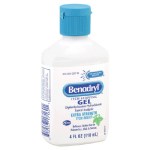poison
There are a number of aphorisms that one imbibes over many years of medical education, especially in medical school. Some are useful; some are not; but some stick with you for reasons that even you can't figure out. For example, I still remember my first day of medical school over 30 (!) years ago. It started with an introductory session beginning at 8 AM that lasted about an hour, an "orientation," if you will, after which classes began as normal. During this orientation, members of the medical school leadership, such as deans and the chairs of certain major departments, got a chance to…
Image from: bluecrossanimalhospital.ca
The FDA has issued a warning that Easter lilies are toxic to cats. According to veterinarian Dr. Melanie McLean at the US Food and Drug Administration ingestion of even a small portion of the leaves, pollen or flowers of the plant are very poisonous to cats. Initial complications include vomiting but then may lead to kidney failure and death if not treated. If you think your cat may have ingested a lily, then seek immediate medical attention for your pet.
Tiger, Asiatic, Day and Japanese Show lilies are also highly toxic to cats.
Dog owners take…
The will of the voters in Portland, Oregon has endured for more than fifty years, for the fourth time rejecting fluoridation of the city's tap water in a ballot referendum. On Respectful Insolence, Orac writes "public water supplies are a precious commodity. To justify putting something in them requires good evidence of safety and efficacy." And continues "since 1945 the fluoridation of drinking water has reduced tooth decay by 40-70% in children and tooth loss in adults by 40-60%." Orac respects Portlanders' right to more cavities, but says "classic antiscience arguments"…
The title of this post comes from a description coined by a California neurologist who, in 1982, began investigating a bizarre disease outbreak: patients with bent and twisted bodies, faces stiffened to the point that some were drooling uncontrollably, even in the summer heat resembling bodies frozen to rigidity.
As Dr. William Langston investigated further he discovered all six of these living statues had used a new form of synthetic heroin, new to the Bay Area that July. Alarmed, Langston called a press conference to warn of bad drugs on the streets.. But he - along with state and…
The name Phar Lap comes from an Asian word for lightning; a sky flash. A passing dazzle of light, a spark in the night.
And so he was, the big copper racehorse, born in New Zealand, trained in Australia, whose dazzling speed made him one of those unexpected beacons of hope during the Great Depression and who, according to a report published in an international chemistry journal in April, was killed by a massive dose of arsenic.
Of course, no one who follows race horse history could be entirely surprised by that finding. For one thing, it built on preliminary results from 2006. But from the…
This is a story about 13.4 million promotional drinking glasses. Really cute colorful glasses produced for McDonalds in a tie-in for the current hit movie, Shrek Forever After. All of said glasses recalled by said McDonalds (in both the U.S. and Canada) after it turned out that the pigments used to create those images contained the toxic metal cadmium.
Oops, you might say. Because cadmium has been known as a bad actor for close on 200 years. Almost since it was discovered, in fact. So before we return to the poisoned Shrek glasses, let's spend a little time on that history - and…
(Just a note: The giveaway period for the audiobook of The Poisoner's Handbook has ended. If your comment is not published, it's too late to be considered for a free copy. But still glad to hear your ideas! Winners to be notified on Wednesday).
One of the most interesting - and I think important - comment threads on this blog has concerned risks posed by the gas methane, blamed (along with BP) for the devastating oil spill in April and still seeping into the water from the broken drill pipe.
"We don't know the composition of the crude oil as it is leaving the well head. This crude is…
In a recent discussion on this blog, an interesting thread appeared: the idea that BP's heavy use of chemical dispersants to break up the Gulf oil spill was as much damage cover up as damage control.
Here are a few examples:
My suspicion is that the main reason they used these dispersants was to hide the oil from view.... Anything that will keep the oil out of site below the surface allows them a certain measure of plausible deniability regarding their knowledge of the spills true magnitude.
I think there is a big effort on the part of BP to minimize the aesthetic and…
The latest news from the Gulf of Mexico offers both relief (the "top kill" approach to ending the oil spill may be working) and dismay (the amount of oil pouring into the water is now thought to be closer to 20,000 barrels a day rather than the 5,000 barrels that BP has insisted on for weeks.)
In other words - at worst case - the U.S. Geological Survey estimates that the spill amount may be closer to 39 million gallons of oil so far, rather than the 11 million previously suspected. Now, I've spent the last week or so focusing on the chemical dispersants used to break down the oil,…
So, yesterday, a friend of mine suggested that BP should stand for Barren Planet rather than British Petroleum.
And today The New York Times reported that despite all the evidence that BP's favorite dispersant (yes, Corexit) is more poisonous and less effective than others on the market, and despite the fact that the EPA order the company to find an alternative by, um, yesterday, the company was still dumping the same old, same old chemical compounds into the Gulf of Mexico.
Despite the fact that there are 11 other approved dispersants on the EPA list.
Talk about warning…
The standard toxicity test for chemical compounds is called the LD50. LD stands for Lethal Dose and 50 indicates 50 percent. In other words, LD50 means the lowest dose at which a material kills half of the test subjects.
The results are usually given in milligrams of compound per kilograms of body weight. Many of these tests are conducted on laboratory rats. To give you a few rat results: the LD50 of table sugar (sucrose) is 29,700 mg/kg. For table salt (sodium chloride, NaCl) it's 3,000 mg/kg. Really poisonous substances, though, measure in the single digits: Sodium cyanide (…
Today, the U. S. Environmental Protection Agency announced that it would require BP to use a less toxic (and more effective) chemical dispersant than the brand used so far. I wish, I wish, I'm always wishing for these actions to sparkle with government intelligence and initiative.
But it's obvious that the EPA was responding to pressure created by media reports, starting with a first class piece of research from Greenwire and by resulting Congressional inquiries. In fact, the EPA appears to have stood passively by while BP dumped more than half a million gallons of the chemical dispersant…
Once upon a time - by which I mean the 19th century - people spilled the poison arsenic into their lives with free and merry hands.
Arsenic was mixed into medicines, into cosmetics, into weed killers, insecticies, rat poisons, fly papers. It was the primary ingredient in a number of well-known dyes used to color fabric, wallpaper, the artificial leaves used to decorate hats and wreaths, cardboard boxes, greeting cards, labels, candles, India rubber balls, oil paint, tin plants, Venetian blinds, carpets, soap, and even green stones set into costume jewelry.
Naturally, poisoners…
Yesterday, the U.S. Food and Drug Administration issued a strong recommendation to citizens of this country: Stop drinking anti-itch gels. They're meant to go on your skin. People who swallow them - and the FDA has been tallying up a series of cases - tend to suffer from dizziness, hallucinations or fall unconscious.
At that point, they probably aren't too bothered by itching, of course. But I have to think there's an easier way.
Most of those who mistakenly gulped down a few squirts of gel were consumers of Benadryl Itch-Stopping Gel. They apparently assumed this was just another…
Let's start with some slightly, okay, more than slightly depressing numbers: Since the devastating explosion on BP's Deepwater Horizon rig almost three weeks ago, more than 1.7 million gallons of oil have spilled into the Gulf of Mexico and more than 250,000 gallons of chemical dispersant have been sprayed onto that spill in an effort to contain the damage.
Everyone agrees that it's the enormous slick of oil that we should really worry. But in the last week, questions have also been raised about the cleaning chemicals flooding into the Gulf. Although the amount pales, as they say,…
On July 4, 1850, U.S. President Zachary Taylor attended an Independence Day celebration where he ate well - snacking on fresh cherries and creamy milk, sampling a variety of treats pressed on him by enthusiastic well-wishers. Five days later, Taylor was dead of a severe attack of gastroenteritis.
And for decades afterward, suspicions lingered that one of those so-called well-wishers had been an assassin, had mixed arsenic into a slice of pie or dish of ice cream. A high dose of the metallic poison arsenic can also bring on severe nausea and painful stomach cramps.
Finally, in 1991, one of…
One evening, in the early summer of 2008, a Colorado sheriff's deputy named Jonathan Allen came home to find that his wife had made him a "special" dinner. Waiting on the table was his favorite spicy spaghetti dish and a big leafy bowl of salad.
As he told investigators later, the salad was surprisingly bitter. But his wife told him it was a "spring mix" and he assumed it contained another of those trendy herbs that people use to liven up their greens. At least, he thought that way until he ended up in the hospital suffering from severe stomach cramps and a wildly speeding heart.
After…
The chemical symbol for the metallic element gold is Au, taken from the Latin word aurum meaning 'shining dawn'. In the Periodic Table of Elements it occupies a companionable neighborhood of other metals, tucked neatly between platinum (Pt) and mercury (Hg).
But as origin of its chemical symbol indicates, we've long found difficult to be prosaic about an element that possesses such a sunlit beauty. People have been creating ornaments of gold for more than 5,000 years; whole myths have been created about it, such as the ancient Greek tale of King Midas, who loved gold so much that he persuaded…
In 16th century France, there lived a king with a beautiful and somewhat mysterious mistress. Diane de Poitiers was almost 20 years older than Henri II but she looked like one of his contemporaries. She had skin of a near porcelain white and auburn hair as fine as silk thread.
Famed for her intellect as well as her beauty, Diane was not only the king's lover but one of his closest political advisors. He even encouraged her to sign some of his official correspondence HenriDiane. After Henri died in 1559, his angry and resentful widow banished Diane from the court. She died at the…
In an earlier post, I wrote about the possible copper poisoning of the great British poet and artist William Blake. The very simple lesson inherent in that story is that a strong dose of metals on a regular basis is generally bad for a person's health.
But one could argue that this is too simple a lesson. That not all metals are equally dangerous. In support of that caveat, in today's post, I'm featuring a short excerpt from my book, The Poisoner's Handbook, which concerns a human circus exhibit and a steady diet of silver nitrate:
In the chilly January of 1924, scientists at…






